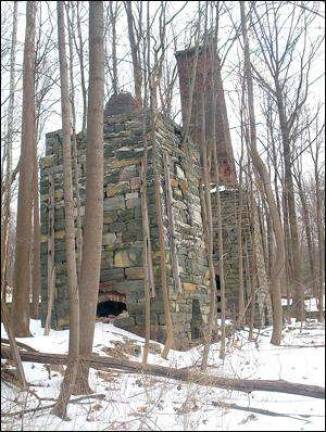Borough wants state to address safety concerns at lime kilns

Hamburg - Several years ago, Hamburg negotiated a land swap with the state, trading a five-acre parcel including four lime kilns built in the late 1800’s for land that is slated for a park. Now, borough officials, saying the old kilns are a safety hazard, want the state to do something to protect children who view them as a playground. “The conditions of this site are dangerous, and we would like to know what will be done by the state to ensure safety and preservation,” Mayor Paul Marino said. The site, known as the Windsor Lime Works, is located in a residential neighborhood on Lime Kiln Road and adjacent to the Wallkill River. The Windsor Lime Works were built in 1877 by Peter Vanderhoof. They became known as Vanderhoof Lime Co. and The Hamburg Lime Works. At its peak, the kilns were producing 100,000 barrels of high-quality lime a year, distributed from New Jersey to Maine and used to make cement and concrete. The dilapidated kilns, measuring 18 feet square at the base with chimneys rising from 35 to 74 feet, are made of brick, stone, and iron and located along a defunct railroad line. Lime kilns were used in the mid 19th century to produce quicklime by baking limestone in large ovens, or kilns. The kilns pose a safety threat to the public, according to Marino and Councilman Dan Barr. Roughly 18 months ago, Barr was hiking near the Lime Kiln site and identified a group of Boy Scouts exploring the site. “The kids were playing around the area and crawling inside the ovens,” he said. Barr immediately contacted State Senator Robert Littell’s office via e-mail to find out when the state planned to clean up the site and install a security fence to prevent trespassers accessing the dangerous area. He is still waiting for a response. Janet Blum, spokesperson for Littell (R-Franklin), who is up for re-election this year, said, “There is no reason to secure the site; it is not hazardous. We don’t know there is a problem there is no way for us to get involved, we don’t go into a town and tell them what to do; the ball’s in their court first.” Darlene Yuhas, spokesperson for the department of environmental protection, said, “Our people are checking this. We would be very concerned if there are potential safety hazards on that property.” According to an N.J. Historic Preservation Office document, the property was designated a State and National Historic Preservation site in 1977 through a “State Historical Preservation Office Opinion.” “Historic preservation is the identification, evaluation, and protection of historic and archaeological resources so that they continue to play an integral, vibrant role in their communities,” says the department’s Web site. The Highlands Regional Master Plan prepared an inventory of the 603 historic preservation sites in the Highlands region. According to the master plan, a preservation office opinion is an “evaluation of eligibility prepared when a federally funded activity is expected to have an effect on historic properties not listed on the National Register.”